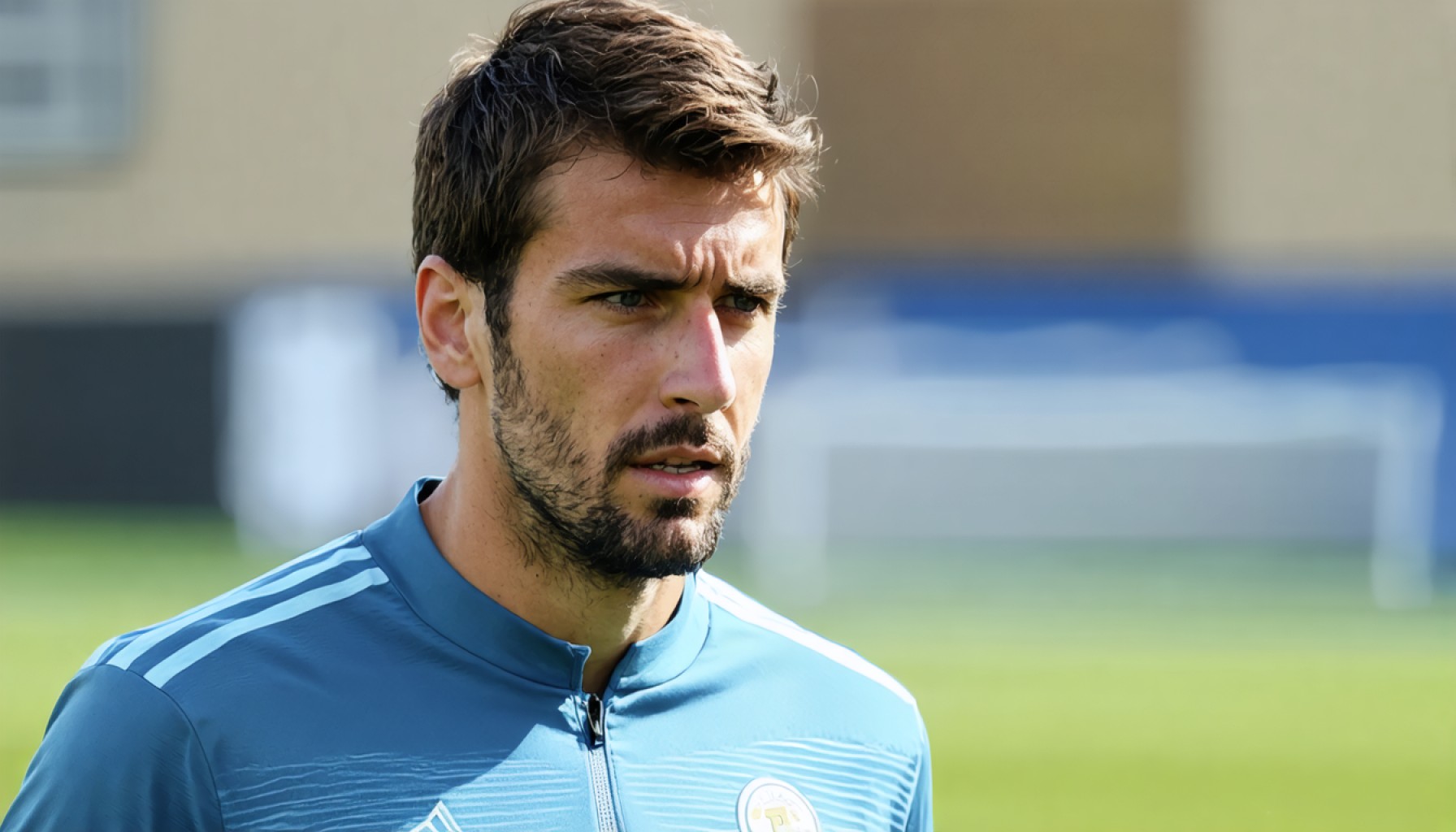- Fernando Llorente’s departure from Athletic in 2013 strained his relationship with the club, creating lingering discord.
- Llorente criticizes former Athletic president Josu Urrutia for blocking his return based on a rigid retention policy.
- Llorente sought to rejoin Athletic in 2015, but the club’s silence redirected him to Sevilla.
- Llorente reflects on his complex relationship with former coach Marcelo Bielsa, marked by both intimacy and detachment.
- The story highlights that an athlete’s personal struggles can overshadow their on-field achievements, emphasizing the importance of support beyond talent.
A tapestry of strained relations and severed ties paints the saga of Fernando Llorente and his former club, Athletic. Summer 2013 marked a turning point when Llorente, transitioning to Juventus, left behind a breached relationship that still echoes with discord. The tensions between player and club arise like specters, as Llorente, with a voice etched in frustration, reflects on unfulfilled hopes and quelled dreams.
No finger points more heavily than at Josu Urrutia, Athletic’s ex-president. Llorente recalls how Urrutia’s steadfast belief in retaining the homegrown talent at all costs became an immovable mountain in his path back to Athletic. This firm stance, Llorente argues, ignored the possibility of his return on a free transfer, missing a chance for both parties to reconcile.
The tale doesn’t end there. Llorente’s narrative unfurls further into the realm of missed opportunities and personal anguish. Aspiring to rejoin his beloved club in the summer of 2015, he awaited their call. But silence reigned. The lack of interest from Athletic shifted his course toward Sevilla, where Unai Emery’s call beckoned him onward, leaving nothing but empty echoes from the Basque club that once cheered his name.
Even the enigmatic Marcelo Bielsa, former Athletic coach, stands in the crosshairs of Llorente’s retrospective critique. The intense dynamics, ranging from cold detachment to intimate one-on-ones, left their mark. The early spark under Bielsa’s command faded, revealing cracks in their partnership with time.
Through Llorente’s eyes, we glimpse a lesson shrouded in regret: the personal struggles of the athlete overshadow the glory on the field, urging leaders to embrace not only the talent but the person seeking more than the allure of victory.
Unveiling the Drama: Fernando Llorente’s Strained Ties with Athletic Club
How-To Navigate Player-Club Relationships: Critical Steps
1. Communication is Key: Maintain open dialogue with players, especially during transfer windows, to align their personal goals with club objectives.
2. Prioritize Transparency: Establish clear understanding and transparent negotiation terms for renewals or transfers, reducing feelings of betrayal.
3. Long-Term Relationship Building: Foster enduring relationships that extend beyond the financial aspect, understanding player aspirations and potential post-retirement roles.
4. Incorporate Exit Strategies: Plan potential player departures amicably, incorporating both a professional and compassionate perspective.
Real-World Use Cases
– Transfer Policy Transformation: Clubs like Borussia Dortmund exemplify proactive transfer policies, balancing profitable exits while maintaining player goodwill.
– Reconciliation Efforts: Barcelona’s reconciliatory approach to former players returning in management roles highlights the value of mending old relationships.
Market Forecasts & Industry Trends
– Player Mobility Increasing: The football transfer market is witnessing unprecedented mobility, with clubs encouraging player exits to balance wage budgets.
– Homegrown Talent Focus: Clubs are emphasizing academy systems to cultivate loyalty and sustain club ethos amidst high-transfer activity.
Reviews & Comparisons
– Club Management Approaches: Compare Athletic Club’s retention-focused management with Real Sociedad’s adaptive strategy, which blends retention with strategic sales.
– Perspective of Former Players: Analyze how clubs like Manchester United engage former players in ambassadorial roles, fostering positive relationships.
Controversies & Limitations
– Limited Adaptability: Athletic’s rigid stance on player retention can stifle potential lucrative exits and create internal discontent.
– Personality Clashes: Inflexible management, as highlighted by Llorente’s experience, can lead to publicized disagreements damaging both parties’ reputations.
Features, Specs & Pricing
– Athletic Club’s Model: Known for focusing on procurement from the Basque region, this policy maintains cultural integrity but limits player options.
– Juventus’ Acquisition Strategy: Frequented in securing free transfers, leveraging experienced players without hefty fees.
Security & Sustainability
– Maintaining Cultural Heritage: Athletic’s local player policy ensures cultural continuity, reinforcing community ties and abiding by sustainability in sports philosophy.
– Risk of Talent Outflow: By limiting external transfers, clubs risk losing competitiveness on the European stage due to insufficient squad depth.
Insights & Predictions
– Shifting Dynamics: Expect Athletic to slowly adapt to modern market demands, possibly integrating a more flexible transfer approach.
– Legacy and Change: Llorente’s saga may initiate strategic reflections within clubs regarding player transitions and legacies.
Tutorials & Compatibility
– Handling Media Narrative: Clubs can employ public relations strategies to better navigate player grievances in the media and maintain a robust club image.
Pros & Cons Overview
Pros:
– Cultural Identity: Basque-only policy strengthens Athletic’s local identity and community ties.
– Player Loyalty: Emphasizes retention and loyalty, fostering long-term player-club commitments.
Cons:
– Limited Squad Options: Restricts player acquisition scope, possibly impacting competitive performance.
– Potential for Discontent: Rigid policies can lead to player frustration, especially post-disagreements, contributing to a toxic atmosphere.
Actionable Recommendations
– Engage in Player Exit Dialogues: Initiate regular discussions regarding career progression and exits to keep relationships amicable.
– Balance Tradition with Modernity: Athletic Club can explore phased policy inclusions, allowing for selective external talents while preserving Basque roots.
For more insights into similar challenges and solutions within the football industry, visit FIFA and UEFA.
